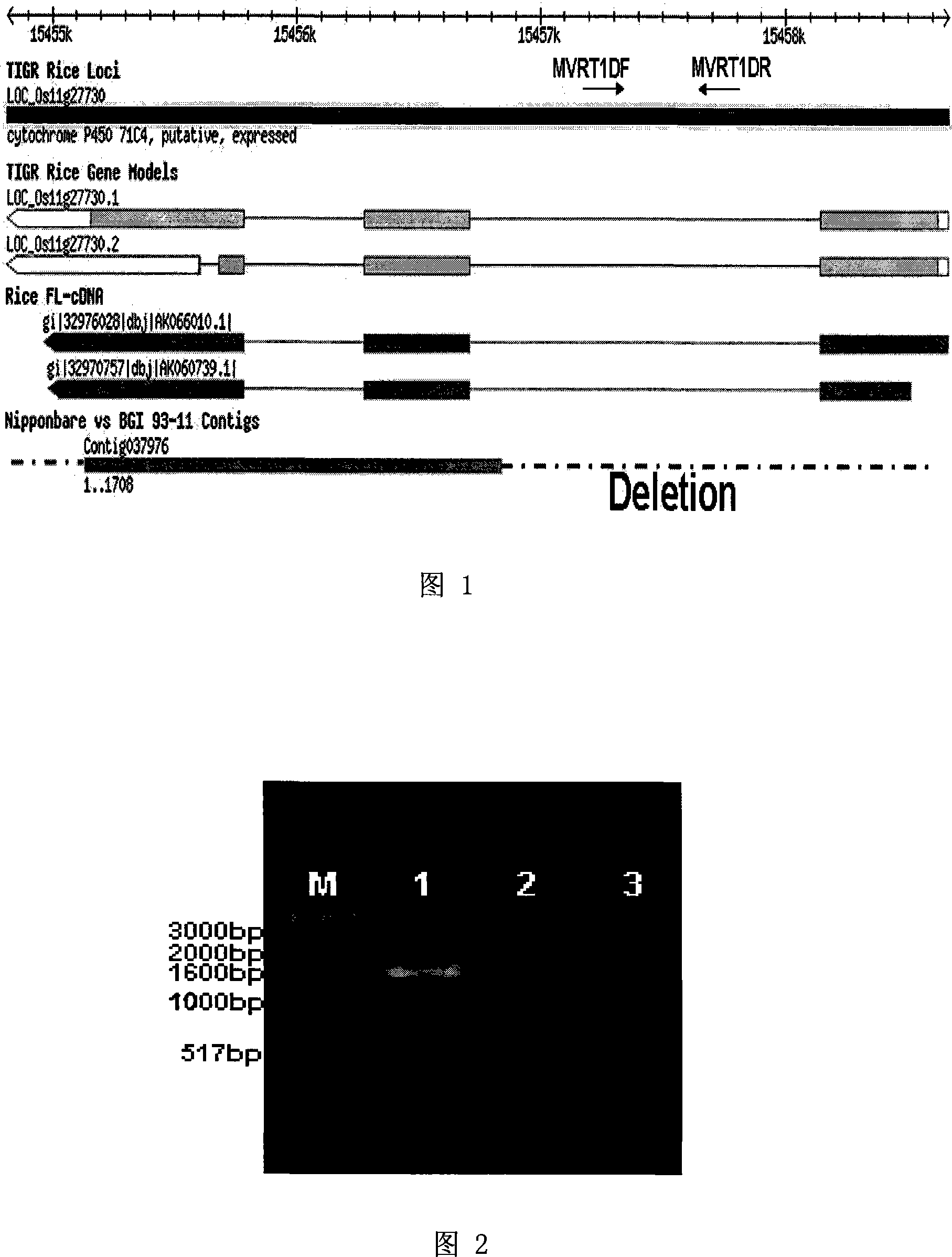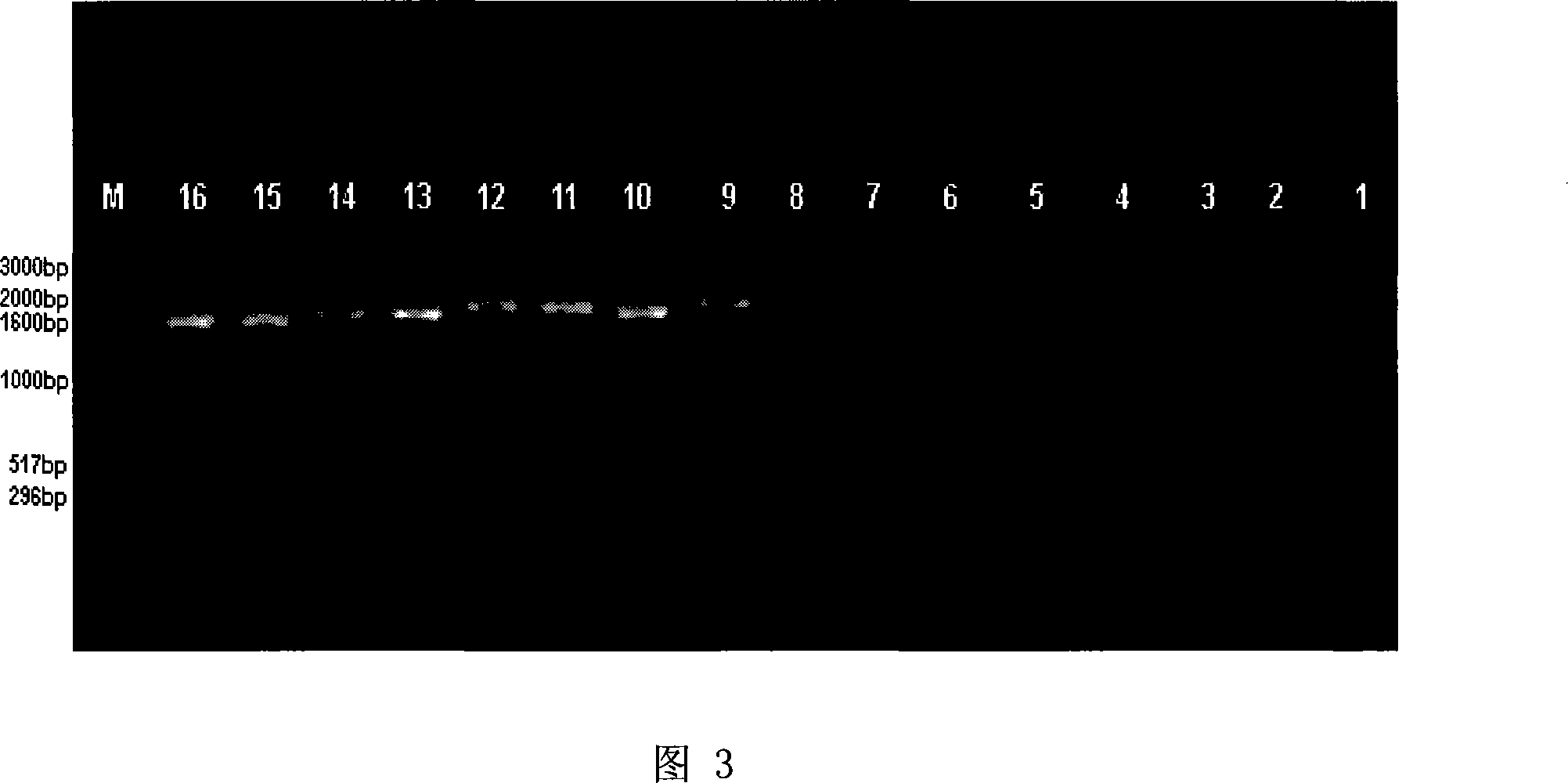Auxiliary screening method for indica rice and japonica rice, and special-purpose primer for the same
A technology for indica and japonica rice, which is applied in biochemical equipment and methods, microbial determination/inspection, DNA/RNA fragments, etc., can solve problems such as difficult to study the degree of indica-japonica differentiation in rice, indica-japonica differentiation is not obvious, intermediate, slow, etc. , to achieve the effect of speeding up breeding, low cost and simple operation
- Summary
- Abstract
- Description
- Claims
- Application Information
AI Technical Summary
Problems solved by technology
Method used
Image
Examples
Embodiment 1
[0020] Example 1. Discovery of different expression patterns of gene LOC_Os11g27730 in indica and japonica rice
[0021] Firstly, the microarray data of indica and japonica rice at different developmental stages and different tissue parts were mined and analyzed. The results showed that the expression level of gene LOC_Os11g27730 was very low or even not expressed in indica rice, while the expression level in japonica rice was extremely high. According to previous research results, the main reason for the difference in gene expression may be the insertion / deletion (InDel) of the base sequence or the regulation of other genes.
Embodiment 2
[0022] Embodiment 2, be used for the design of the primer of auxiliary screening indica rice and japonica rice
[0023] Using the method of comparative genomics, the nucleotide sequence alignment (Blast) analysis of the genome sequence of the gene LOC_Os11g27730 in the indica rice variety 93-11 and the japonica rice variety Nipponbare was first carried out, and it was found that the gene was indeed deleted in 93-11 (figure 1).
[0024] In order to further verify whether there is a genome-level difference between 93-11 and Nipponbare, according to the Nipponbare sequence, primers MVRT1D were designed in the region where the two had genome differences: MVRT1DF (sequence shown in sequence 1 in the sequence table) and MVRT1DR (sequence shown in Sequence 2 in the sequence listing), and the genomic DNA of Nipponbare and 93-11 were used as templates for PCR verification. The reaction system of PCR amplification is: rice genomic DNA template 20ng, Taq Plus DNA polymerase 0.5U, 2.0μl ...
PUM
 Login to View More
Login to View More Abstract
Description
Claims
Application Information
 Login to View More
Login to View More - R&D
- Intellectual Property
- Life Sciences
- Materials
- Tech Scout
- Unparalleled Data Quality
- Higher Quality Content
- 60% Fewer Hallucinations
Browse by: Latest US Patents, China's latest patents, Technical Efficacy Thesaurus, Application Domain, Technology Topic, Popular Technical Reports.
© 2025 PatSnap. All rights reserved.Legal|Privacy policy|Modern Slavery Act Transparency Statement|Sitemap|About US| Contact US: help@patsnap.com


